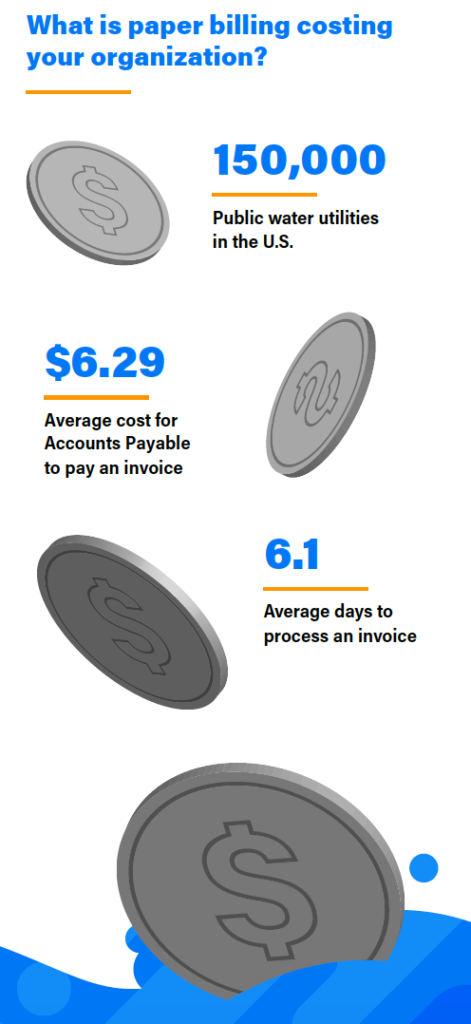
Lift the Burden of Water Billing Management
Amy Hou | December 14, 2017 | Energy & Sustainability
As it stands today, there are more than 150,000 public water utilities in the U.S. (compared to only ~3,000 electric utilities). While many of these entities are small and serve isolated parts of the country, any large organization with operations in multiple geographies has bills from a variety of providers to process — with different formats, fee types, and billing cycles. Larger organizations, and those with water-intensive operations, stand to gain significant benefits from automating their water billing processing and payment. An automated water data feed can aggregate and standardize data from thousands of utilities, taking out extraneous time and labor from manual processing.
Manually managing water billing is extremely complex. Many small water utilities still distribute paper bills to customers, causing delays in processing and creating a mess for organizations to sift through. Smart meters would take the pain out of paper billing and provide real-time, granular data. It’s expected to grow in the next few years, but for now, penetration is low. Enterprises can buy and install their own water meters, but this is a significant capital cost for businesses with many locations.
Learn how to integrate interval data from smart meters in our eBook.
A manual process for water bill payments also puts undue burden on accounts payable (AP) departments. According to Aberdeen Group, the average cost for the AP department to pay an invoice is $6.29, taking 6.1 days for each invoice to be processed. Each month brings deliveries of at least one utility bill from each provider, and a given organization may have hundreds (or more) accounts from many different providers. This adds up to countless hours of time just spent processing and paying the bills. Even small reductions in these costs can have significant bottom line benefits.

Automated electronic data acquisition takes the manual processing and payment of invoices out of the equation, significantly increasing productivity for the AP team. Moreover, an automated data service automatically checks each bill for errors and anomalies, so that changes in rates or excessive charges don’t fall through the cracks. When an enterprise can spend less time managing and manually entering water usage and billing data into a central corporate database or software application, more time can be allocated to:
- Accelerating corporate responsibility efforts
- Achieving water reduction targets
- Tracking ongoing progress
Coca-Cola, for instance, used a data-driven life cycle analysis of its products to bring water cost per unit down from 2.7 liters in 2004 to 1.96 liters in 2017.
Even firms that already have robust water reduction plans will achieve greater efficiencies by using an automated feed of water billing data. And for organizations just starting to develop water conservation strategies, access to standardized data will enable baselining and benchmarking to help establish data-driven action plans. To learn more about accessing an automated feed of water billing data, check out our latest white paper.
You might also like:
- How EPA’s New Water Score for Multifamily Gives You a Smarter Way to Save Water
- A Day in the Life: Enterprise Utility Bill Management
- Webinar with UL EHS Sustainability: How to Simplify Your Utility Data
If you like what you’re reading, why not subscribe?
About Amy Hou
Amy Hou is a Marketing Manager at Urjanet, overseeing content and communications. She enjoys writing about the latest industry updates in sustainability, energy efficiency, and data innovation.
You May Also Like
Support Business Continuity by Embracing ESG
Honor Donnie | March 18, 2022 | Energy & Sustainability
